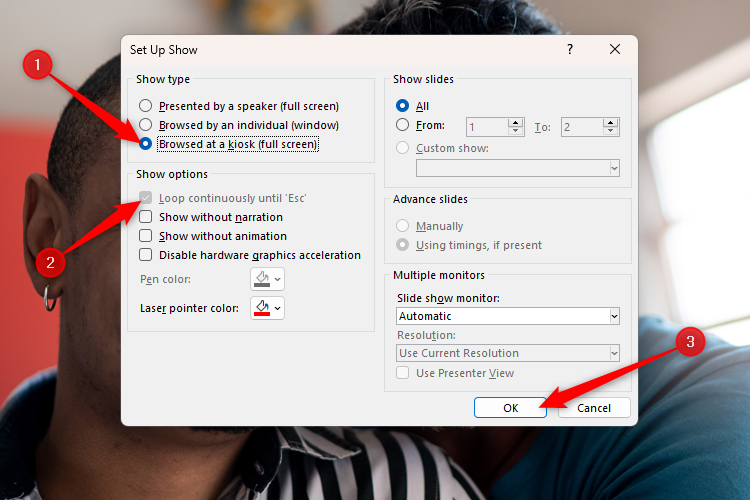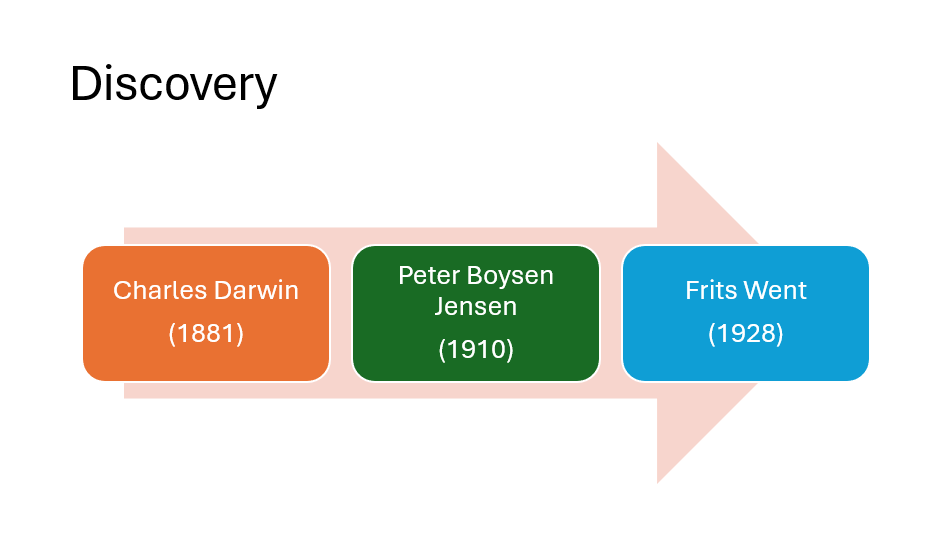Although best known for professional presentations in the workplace, PowerPoint is incredibly versatile and can be used in many different contexts. In this guide, I’ll show you other ways to make the most of Microsoft’s slideshow program.
1 Training and Tutorials
Many companies and schools pay for in-house training software when they could instead use PowerPoint to achieve similar outcomes.
Insert Action Buttons
PowerPoint’s action buttons help your trainees navigate your slides, meaning you don’t need to supervise them as they work through the content. In the Insert tab on the ribbon, click “Shapes,” and choose one of the action buttons in the drop-down menu.
When you add an action button, a pop-up window helps you decide what happens when it’s clicked.
Each slide in my training PowerPoint has a Home button, a Back arrow, and a Next arrow.
You’ll also notice an Information button in the top-right corner. When clicked, a text box containing instructions for this slide appears, and when clicked again, it disappears. I created this action by adding the Wipe entrance and exit animations to the text box, and using the Trigger drop-down in the Animations tab to nominate the action button as the trigger.
Add Animated Shapes
The text boxes in the center of the slide replicate flashcards, which, when clicked, fade into green text boxes that reveal the definitions.
To achieve this, I first created the pink text boxes containing the different terms, and animated each of these to fade out when clicked. I then created the green text boxes, which, when clicked, trigger the pink text boxes to reappear.
Embed Videos
A great way to liven up your tutorial is by adding a video. PowerPoint lets you embed a video from your device, Microsoft’s gallery of stock videos, or an online source. Click “Video” in the Insert tab, and choose the relevant option.
For example, if you’re creating a health and safety tutorial, you could embed a YouTube video on safe lifting. Just remember to credit the source if required!
Add Voice Recordings
There may be times when you need to add a voice clip to explain or emphasize a complex concept or important point. And it’s elementary to do this. With the relevant slide activated, click Insert > Audio > Record Audio.
Make sure you’re in a quiet room and your microphone is turned on, and click the red “Record” button to begin. When you’re done, click the “Stop” square, listen back to your recording via the “Play” icon, and, if you’re happy, name your recording and click “OK.”
PowerPoint adds a speaker icon to your slide, which your trainee can click to activate your recording. You can also edit your recording via the Playback tab on the ribbon.
Add an introductory slide to the start of your tutorial explaining what each of the icons in your presentation does.
2 Photo Albums or Portfolios
PowerPoint can act as a rolling gallery of pictures. Whether you want to project photos of the happy couple getting married or you’re exhibiting your portfolio of artwork, you can set PowerPoint to loop continuously.
After you have added images to your slides, click “Set Up Slide Show” in the Slide Show tab.
Checking “Browsed At A Kiosk” will automatically select the “Loop Continuously Until Esc” option. Then, click “OK.”
Now, select the first slide, and open the “Transitions” tab. There, choose a transition that works for you.
Then, staying in the Transitions tab, check “After” in the Timing group, and choose a time interval for your slides to progress from one to the next. Finally, click “Apply To All.”
When you press F5, the slideshow will loop continuously until you press the Esc key.
3 Engaging Storytelling
An effective PowerPoint presentation can attract and maintain people’s attention, which is useful if you want to create a marketing campaign for a billboard or an automated information slideshow that will appear on screens around a room. As well as the looping, transition, animation, and voice recording tools I discussed in the examples above, here are some other PowerPoint features that help you convey your message clearly and effectively.
Morph Transition
PowerPoint’s Morph transition lets you create a seamless object animation from one slide to the next.
For example, this is the first slide of my surgery information screen.
Then, on slide 2, I repositioned my image and used the Crop To Shape tool in the Crop drop-down of the Picture Format tab to fit it nicely into the slide’s design.
Finally, with slide 2 activated, I clicked Transitions > Morph.
PowerPoint evaluates the active and previous slides and applies morphing effects to any objects that exist in both. As a result, as my presentation progresses from slide 1 to slide 2, the image stays on screen and appears to move from the first position to the second position. Also, because I’ve used Morph, the text on slide 1 fades out while the text on slide 2 fades in.
Add a QR Code
QR codes are like advent calendars—people can’t resist finding out what’s behind them! In Microsoft Edge, right-click the web page for which you want to generate the QR code (such as your website home page or a survey), and click “Create QR Code For This Page.”
Then, copy the QR code and paste it into your PowerPoint presentation. Just make sure it’s big enough for people to easily scan with their phones, and make sure it stays on-screen long enough for people to capture!
Record Your Presentation
You don’t always have to use PowerPoint whenever you’re ready to present your story. In fact, recording your PowerPoint and saving it as an MP4 makes it more portable—some devices might not support PowerPoint, whereas most support MP4 playback. You can also add a voiceover—and, if you wish, a live video of your face!—to your slides.
Once your presentation is ready, click “From Beginning” in the Record tab.
Then, in the Presenter View that appears, choose whether you want to activate your microphone and camera, and click the “Record” button.
After the countdown, your recording will begin. You can then progress through your slides (either manually or using automated transitions you’ve added), and click the “Stop” icon when you’ve finished. Finally, click “Export” to name your video and save it in a location of your choice.
4 Self-Study
Earlier, I talked about using animations to create flashcards, and this is also a great tool for self-study. Here are some other PowerPoint features you can use when preparing for your upcoming exams.
Follow the 6 x 6 Rule
PowerPoint is built for bullet-pointed lists. As a result, it can help you follow the 6 x 6 rule, which suggests that you should have no more than six bullet points on each slide, and each bullet point should contain no more than six words. To this end, PowerPoint can help you to condense your detailed class notes into refined snippets of essential information—much like using the old-fashioned method of index cards.
Use SmartArt to Visualize Key Information
Another way to reorganize your class notes is using PowerPoint’s built-in SmartArt tool. For example, if you want to demonstrate a linear process or a timeline, bullet points might not do the trick.
The first way to achieve this is by selecting text you already have in your presentation, and clicking “Convert To SmartArt” in the Home tab. You can then choose a design that works well for the information you want to visualize.
Alternatively, you can generate the SmartArt before adding your text. To do this, add a new slide, and click Insert > SmartArt. Then, choose a suitable graphic, and click “OK.”
Finally, populate the graphic with your key information.
Create a Timer
A countdown timer can be useful when you want to put yourself under pressure to recite certain information. While PowerPoint doesn’t have a countdown timer tool, you can use shapes and animations to create one. For example, you can use the Disappear exit animation on layered text boxes to create a numerical countdown timer. However, I prefer a more straightforward method.
First, click Insert > Shapes, choose a basic circle, and position the shape where appropriate.
When drawing your circle, hold Ctrl to make it perfectly circular.
Then, copy and paste that circle on the same slide, and click and drag the second circle so that it sits directly on top of the first circle.
Next, reformat the second circle so that it is a different color from the first by choosing a preset design in the Shape Format tab. Then, with the second circle still selected, click the Wheel exit animation in the Animations tab.
Finally, launch the Wheel Animation dialog box by clicking the launcher icon in the Animation group, type the timer length (in seconds) into the Duration field of the Timing tab, and click “OK.”
When you press F5 to view your presentation, click anywhere on the slide where you inserted the circles to see your timer in action.
If you’ve designed your PowerPoint presentation to be presented to others, consider adding subtitles to your slides so that those who are hard of hearing or speak another language can appreciate your hard work.
































